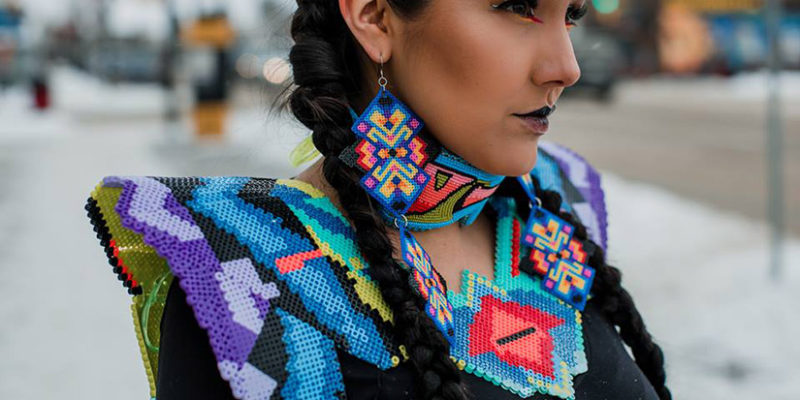What Can We Learn From Indigenous Fashion Design
This project is dedicated to the use of indigenous clothing Australia design and embellishments to promote cultural traditions and preserve local identity. As opposed to mass production and fast fashion, more and more people are discovering and experiencing contemporary local fashion. Today, a wave of Indigenous and Indigenous designers are overlaying political and cultural ideas into their designs.
Today, indigenous designers struggle to achieve greater cultural value or draw inspiration that honors the culture of origin. Some contemporary local designers use processes and traditions that go back centuries. Whether modern local designers are updating local 1800s clothing styles or indulging contemporary fashions, these designers explore how contemporary cuts and materials can be combined with traditional cultural design concepts and symbols to create unique, intricately constructed, artistic garments. of great value. The Canadian design team is not the first designer to be inspired by local cultural influences.
Indigenous approaches and ways of creating are processes that have been adopted and inspired by many sustainable designers and creators. Alongside the growing community of Indigenous designers, there is a very small group of non-Indigenous designers who are committed to building sustainable artistic partnerships with Indigenous communities. Indigenous designers demonstrate how fashion can participate in aesthetic exchange without harming the original designers: communities that have refined techniques over generations, created complex systems of meanings and visual languages, and developed unique aesthetic qualities that reflect how they see themselves and the world around them. Indigenous artists and designers have used fashion as a way to interrupt and counter fashion narratives.
With that in mind, Vogue asked 15 local designers to rate fashion sustainability. The first Vancouver Indigenous Fashion Week (VIFW), held in July 2017 in Vancouver, was created in response to cultural appropriation and as a way to show consumers who appreciate local local style that they can wear it with respect by buying from designers first. nations. In response, a few months ago, Vancouver hosted the first ever Indigenous Fashion Week, an attempt by Canada’s indigenous people to revive their heritage.
Here we ask fashion, textile and apparel professionals from around the world how their cultural heritage and local knowledge influences the fashion industry and how they can help propel the fashion industry in one direction – more sustainable.
Mexico needs to do more to protect local fashion models from a host of global brands accused of borrowing or culturally appropriating handcrafted creations for years without credit, lawyers and industry observers say. To combat cultural appropriation more effectively, Mexico needs to strengthen Mexico’s law enforcement, not just demonize fashion brands, Elizalde said.
Their demands, including that of Mexican Minister of Culture Alejandra Frausto Guerrero, who issued an ultimatum last fall that Mexico would no longer tolerate the misappropriation of cultural property without proper recognition, seem to have failed to stop global brands from using Mexican motifs and patterns. in their designs. However, there is a place in the fashion industry where reducing waste has always been a challenge for designers, and these indigenous artists have ideas of what needs to be done to further combat climate change, workplace abuse and waste as change climate is linked to the fashion industry. For Aller, the problem is not that there are no indigenous design codes in fashion, but quite the opposite. What many non-indigenous people may not realize is that while the fashion world has an appetite for local models, it is generally not expressed with taste or respect.
Like a native, like a stylist, like a contemporary in the fashion world, and not like an ancient artifact. Aboriginal designer Sho Eskiro considers it a great honor to continue our tradition and culture in a modern way. She is also one of the few Canadian Aboriginal designers to gain international attention, recently becoming the first local designer to walk in the first ever fashion show at the Eiffel Tower in Paris.
Corina Emmerichs, originally from the Pacific Northwest, is one of the most established artists to have models on the Indigenous Fashion Week runway. He hopes that other designers will also find use in local traditions. Angela DeMontigny, founder of Young Native Fashion Inc. in Toronto, advises leading designers who want to incorporate traditional influences into their collections. Anna Romanowska, a lecturer at Toronto’s Ryerson School of Fashion, says the local voice is growing stronger as the younger generation grows and more designers emerge.
A new project in Toronto called Setsune Indigenous Fashion Incubator Toronto provides a collaborative space for emerging designers to explore tradition and new technologies. Take Roots Studio, a company that works with Indigenous artists around the world to digitize their heritage and use it in new media.
Indigenous groups like the Navajo are now creating a new model of combating corporate exploitation by asserting intellectual property rights and registering traditional brand designs. The idea that designers might patent the material culture of indigenous communities would be a major setback for the indigenous intellectual property movement.
As a patriarch of Aboriginal design clothing Australia, Grant was inspired by how traditional Haida art fits into the body. Grant was a pioneer of native North American fashion in the 1980s. The design echoes the grunge style of the ’90s, but also incorporates a modern love of simplicity and chic. Fashion and entertainment circles including singer Solange Knowles and actress Lupita Nyong’o wore Folawiyos when Lisa Folawiyo combined traditional West African fabrics with handmade embellishments and modern tailoring, and they took notice.
Bethanys is a great example of why locals should be the ones to design with our cultures in mind – that knowledge and understanding comes from community connection and respect and is difficult, if not impossible, to achieve without that deep cultural connection.

